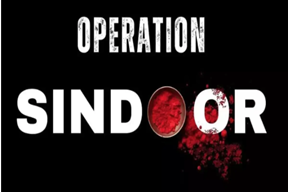Operation
SINDOOR emerged
as a calibrated military response to an evolving pattern of asymmetric warfare,
one that increasingly targets unarmed civilians along with military personnel.
The terrorist attack on tourists in Pahalgam in April 2025 served as a grim reminder of this shift. India’s response was deliberate, precise, and
strategic. Without crossing the Line of Control or international boundary,
Indian forces struck terrorist infrastructure and eliminated multiple threats.
These were neutralised by
the Integrated Counter UAS (Unmanned Aerial Systems) Grid and Air Defence
systems. Air defence systems detect, track, and neutralise threats using a
network of radars, control centres, artillery, and both aircraft- and
ground-based missiles.
Battle-proven AD (air defence) systems like the Pechora, OSA-AK, and LLAD guns (low-level air defence
guns). Indigenous systems such as the Akash, which demonstrated stellar
performance.
AKASH is a short-range surface-to-air missile system to protect vulnerable areas and vulnerable points
from air attacks. The AKASH Weapon System can simultaneously engage multiple targets in group mode or autonomous mode. It has built-in Electronic Counter-Counter
Measures (ECCM) features. The entire weapon system has been configured on
mobile platforms.
Loitering
munitions, also known as "suicide drones" or "kamikaze
drones," are weapons systems that can hover or circle a target area,
searching for a suitable target before attacking.


Comments
Post a Comment